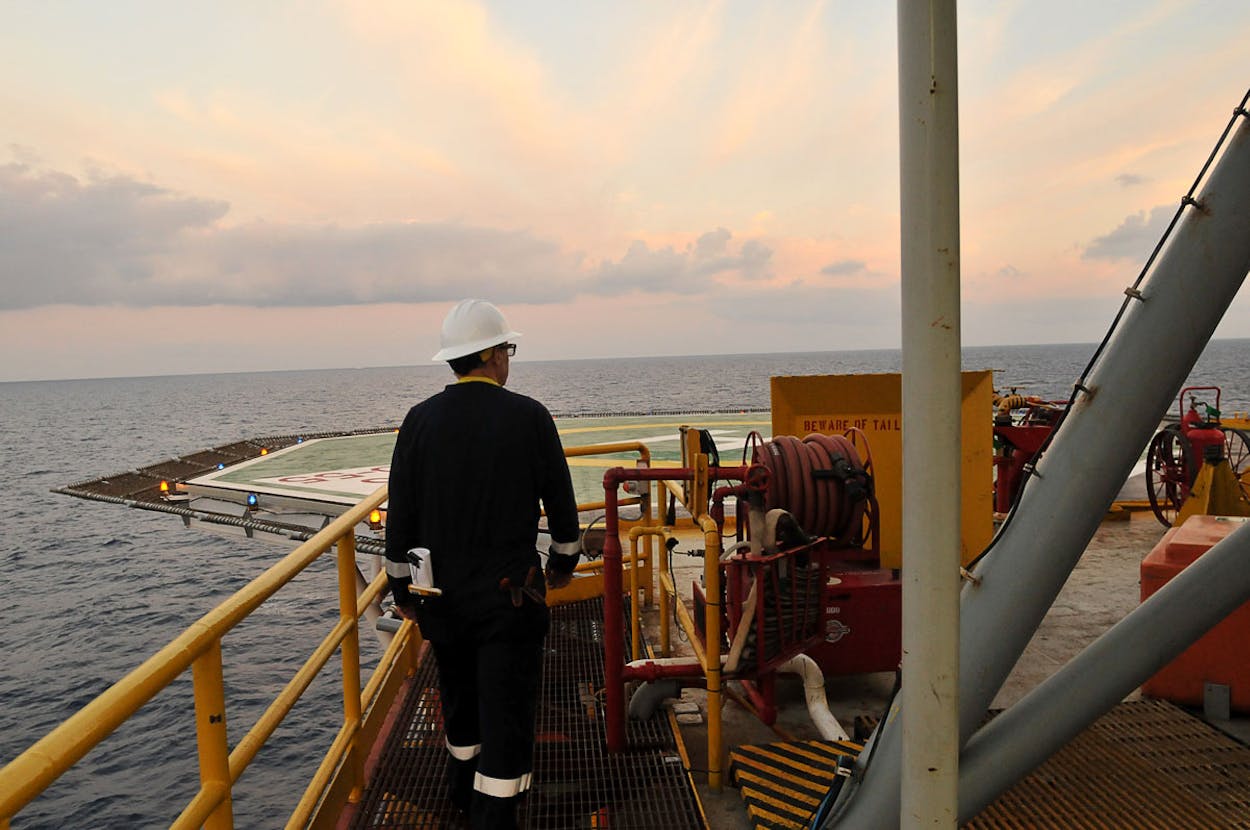In a University of Texas Jackson School of Geosciences lab lie 1.2-meter-long cylinders—21 of them, each one pressurized, chilled, and containing methane hydrate, a compound extracted from the depths of the ocean floor. Each liter could potentially serve as a century’s worth of energy for the United States.
In May, a group of scientists from the UTJSG, Ohio State, Columbia University, and the U.S. Geological Survey (USGS) embarked on a mission sponsored by the Department of Energy to extract the compound, an icy, flammable substance, from the floor of the Gulf of Mexico.
“Methane hydrate is solid, and if you were able to see it in real life, it’s white and looks like ice,” UT postdoctoral fellow Stephen Phillips said. “But it contains a gas molecule inside. In this case, methane is the most commonly housed molecule inside, surrounded by a number of water molecules in a shell.” Methane is the chief constituent of natural gas. The energy content of methane hydrate is extraordinarily high: according to the Office of Fossil Energy at the Energy Department, “One cubic meter of gas hydrate releases 164 cubic meters of natural gas.”
UT research science associate Peter Polito said the team’s objective was to test two different mechanical drill bits in order to determine which would better extract the methane hydrate. But the extraction process didn’t just rely on the engineering tools the team used. Since the the methane becomes inaccessible in pressures above sea level, the crew had to maintain the conditions of the ocean floor so that the formation did not collapse. The temperature had to remain stable as well—all while hauling the methane hydrate cores through 6,000 feet of water.
After the first attempt resulted in recovering only 1.5 meters of pressurized material, the team made small modifications and switched the drill bits. The second mission had a greater yield—12 out of the 13 cores were correctly placed on the ship to be sent back to the lab, resulting in just under four feet of usable material. Phillips said now, the team faces the next obstacle: unpacking exactly how methane hydrate functions through permeability tests, so that we can understand how and in what conditions it forms.
Phillips said scientists are interested in learning how methane hydrate plays into the carbon cycle in order to better understand its effects on climate change as well as its role in natural hazards, such as how it relates to submarine landslides.
But moving forward, their main prerogative is to understand the fundamental properties of the substance so that, within the next two or three decades, it can be reproduced. Polito said this project has proven to him that anything is possible with academic collaboration.
“The window of what I thought was feasible [has been] greatly expanded,” Polito said. “And it was because of the team that we had.”
In 2020, the team will spearhead their next mission. As part of the International Ocean Discovery Program, they will return to the Gulf of Mexico to manipulate the methane hydrate while it rests on the ocean floor. By tapping into the source, lowering the pressure within the methane hydrate cores and taking additional samples, they will be able to determine how the substance reforms in nature—so they can potentially recreate the process in a lab.
Phillips said this will be crucial in an era moving toward using natural gas as a resource for fuel. And one place the team almost certainly knows methane hydrate will be residing is this very spot on the ocean floor.
“I think we’re at the forefront of very important science questions,” Phillips said. “Our group is the tip of the iceberg within this whole community.”
- More About:
- Energy






